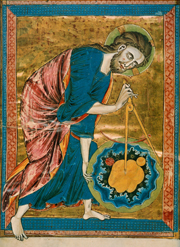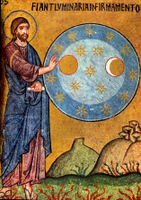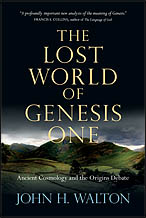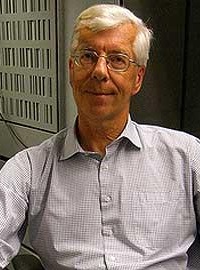
In my last post, we looked at the timing of creation events from the perspective of science. We saw that the scientific data indicate that the universe is 13.7 billion years old and the earth is 4.5 billion years old. In this post we are going to look at the view from the Bible.
There is disagreement among conservative Christian theologians about the meaning of the “days” in the creation account of Genesis 1-2:3. There are four main interpretations: the 24-hour day view, the day/age view, the literary framework view and the Walton view. These differences stem in part from ambiguity about the meaning of the Hebrew word for “day”, yom, which can mean a 24-hour day, the period of daylight or a long period of time. There is also disagreement about the meaning of the Hebrew word for “create” (bara).
Twenty four-hour day view. This view sees the days of Genesis 1-2:3 as literal 24-hour days. Proponents argue that it is the most natural way of reading this account. It is supported contextually by the evening/morning motif at the end of days 1-6 and by the sequential ordering of the days. The most common use of yom is for a 24-hour day and it was the traditional view of many of the early church fathers. Moreover, the Ten Commandments seems to refer to the days of Genesis 1 as a normal work week made up of seven 24-hour days.

The biggest problem with this view is that according to Genesis 1:14-19 the sun was not created until day 4. We now understand the day/night cycle to be due to the rotation of the earth on its axis against a point light source (the sun). This raises the problem of how to account for the day/night cycle mentioned on days 1-3. While some have proposed an alternate light source during days 1-3 or the clearing of the earth’s atmosphere, neither of these interpretations is explicitly supported by the Biblical text.
Another important problem is the absence of the evening/morning motif in the description of Day 7. This suggests that it is continuing, thus weakening the argument that the evening/morning motif is indicative of a 24-hour day.
Some interpreters see Genesis 2 as an expanded account of the sixth day of creation. If this is true, another problem with the 24-hour day view is that there are too many events during the sixth creation day to be accounted for in a single 24-hour day. These events include: the creation of land animals, the creation of Adam, creation of Eve from one of Adam’s ribs. Additionally, God planted a garden in Eden which implies that there must have been a period of time to allow the garden to grow before the creation of Adam and Eve. Finally, God had Adam name all of the animals God had created.
Day/Age View. This is really two closely related views in which the days of Genesis 1 are either viewed as six long periods (ages) of creation or as six literal days that initiate the creation periods. In the first view the Hebrew word yom is interpreted as an indefinite period of time. With respect to the second view, there is no definite article before the word yom so the account can be translated as a first day, a second day, etc. Thus in this view the days would not have to be consecutive.
There are two main problems with the day/age view. First, this view, like the 24-hour view, also suffers from the problem with the sun not appearing until day 4. What is the source of light during the long ages leading up to day 4? Secondly, there is no confirmation in other parts of Scripture that the days of Genesis 1 were long days.
Literary Framework View. This is the view that the days of Genesis 1-2:3 are a literary device rather than actual 24-hour days. There is a neat correspondence between the events of days 1-3 (God forming spaces) and days 4-6 (God filling spaces).
Literary Framework View
|
Forming |
Filling |
|||
|
Day 1 |
Light and darkness |
Day 4 |
Sun, moon and stars |
|
|
Day 2 |
Sky and seas |
Day 5 |
Birds and fishes |
|
|
Day 3 |
Dry land and plants |
Day 6 |
Animals and man |
|
This interpretation neatly solves the problem of the late appearance of the sun since in this view the days do not have a literal meaning. Thus in this view, the Genesis 1-2:3 account does not say anything about the timing of creation events. This eliminates the need for an exact concordance between Biblical and scientific descriptions of the timing of the events in creation.
There is general agreement that the framework structure is there, but the presence of the framework does not necessarily mean that the days don’t have a chronological function as well. In fact, Wayne Grudem states:
the strongest argument against the literary framework view, and the reason why comparatively few evangelicals have adopted it, is that the whole of Genesis 1 strongly suggests not just a literary framework but a chronological sequence of events.

Walton View. This view sees the creation account of Genesis 1-2:3 as occurring over seven 24-hour days but differs from the “24-hour day view” in its understanding of what it means “to create”.
In a previous post I argued that Genesis 1-2:3 is set within the context of an ancient Near Eastern understanding of the cosmos and therefore does not teach modern science. Thus God was speaking to his people in terms that they could understand rather than through a modern scientific account which would have been incomprehensible to them. John Walton has taken this a step further and argues that Genesis 1-2:3 does not teach material creation but instead has a functional orientation. John Walton is a professor of Old Testament at Wheaton College and an expert in the ancient Near Eastern background of the Old Testament. Walton says:
in the ancient world and in the Bible something was considered to exist not when it took physical shape but when it had been separated from other things and given a name and a role within an ordered system.
Thus creation in this context has a functional rather than a material orientation. This view is pervasive in ancient Sumerian, Akkadian and Egyptian literature. Walton says that the reason modern interpreters have viewed the Genesis 1-2:3 creation account in terms of material creation is because of our modern understanding of existence in material terms.
In Walton’s view, the seven creation days of Genesis 1-2:3 are about establishing functions and installing functionaries in the cosmos. Days 1-3 are about establishing the functions of time, weather and food while days 4-6 are about installing functionaries. For example, on day 1 God established the function of time by separating the period of light (day) from the period of darkness (night). Then on day 4 God installed the sun, moon and stars as functionaries to “govern the day and the night” and to “serve as signs to mark the seasons and days and years.”
Walton views day 7 as the most important day of the creation account. The Bible states that “By the seventh day God had finished the work he had been doing; so on the seventh day he rested from all his work.” Both in the Bible and in the ancient world “rest” did not refer to inactivity but rather describes the point in which the deity begins to direct the normal operations of the cosmos. In the ancient world divine rest always takes place in the temple which in Walton’s view is closely related to the cosmos. If these ideas are correct then one could view the Genesis creation account as a ceremony which inaugurates God’s temple by identifying its functions and installing its functionaries. This view would see the creation account occurring over seven 24-hour days but it doesn’t suffer from the problems associated with the “24-hour day view” mentioned above because the account has nothing to do with material creation.
Walton’s view has been criticized for its over reliance on ancient Near Eastern texts versus the Bible for interpretation. Also, while most commentators would agree that Genesis 1-2:3 is concerned with functional origins, many would also see a concern for material origins of the functionaries as well (e.g. the sun, moon and stars). Finally some see the concept of the cosmos as God’s temple and Genesis 1-2:3 as an account of temple inauguration as far-fetched. For example, if this account is about temple inauguration why isn’t this stated more explicitly?
Conclusion. The ages of the universe and the earth are a significant source of apparent tension between science and the Bible. In this post we have seen that there is no consensus among conservative theologians about the meaning of the days of Genesis 1-2:3. There are four main views that can be supported on the basis of scripture alone (24-hour day view, day/age view, literary framework view, and Walton view). Of these views only the 24-hour day view is in conflict with science.
In a previous post, we found that the main message of Genesis 1-2:3 revolved around four great themes: God alone is creator of all things, God created with wisdom and order, God is sovereign over his creation, and man is the pinnacle of God’s creation. While the question of the timing of the days of Genesis is certainly an interesting one, perhaps given the ambiguity about the meaning of the days, the question of timing is not as important as some might think. Thus the meaning of the days of Genesis 1-2:3 would not seem to be an issue over which Christians should be willing to fall on their swords about.
Next in the Christianity and Science series. In my next series of posts we will be looking at a second point of tension between Genesis 1 and science, namely the mechanism underlying the events of creation. First we will be look at the scientific perspective which is the theory of evolution (Part 1). Then we will address Christian questions about the validity of this theory and whether it is compatible with Christian belief.
Questions for further reflection:
- Which of the four views about the meaning of the days of Genesis 1 do you favor? Why?
- How important is the question of the days to the message of Genesis 1 and its function in the Bible?

Suggestions for further reading:
- Creation or Evolution: Do We Have to Choose? Denis Alexander. Monarch, 2008.
- The Lost World of Genesis One: Ancient Cosmology and the Origins Debate, John H. Walton. InterVarsity Press, 2009.
- Origins: Christian Perspectives on Creation, Evolution, and Intelligent Design, Deborah B. Haarsma and Loren D. Haarsma. Faith Alive Christian Resources, 2011.
- Three Views on Creation and Evolution, J. P. Moreland and John Mark Reynolds, General Editors. Zondervan, 1999.
- Added by the editor: PDF with the titles and links to the posts in Tom Ingebritsen‘s Christianity and Science series. Yes, this was created to meet the requests of readers and will be updated. Your interest in and encouragement of this series is much appreciated.
Correction (Thomas B. Grosh IV): 1/25/2014. 1:45 pm. Denis Alexander is now emeritus director at Faraday Institute for Science and Religion. In early 2013, Denis retired and Bob White (a geologist) took over as director. Click here to “get-to-know” and come to appreciate the Faraday staff. Thank-you to Dave Vosburg for the correction (in the below comment section).
Tom Ingebritsen is an Associate Professor Emeritus in the Dept. of Genetics, Development and Cell Biology at Iowa State University. Since retiring from Iowa State in 2010 he has served as a Campus Staff Member with InterVarsity Graduate & Faculty Ministry at Iowa State University

I really enjoyed this. I remember once gleefully writing a paper in undergrad on the Gap Theory. It doesn’t make much sense in these personal days of wrestling with faith and trust. But I surely appreciate what you have written and will be reading more!
While I am not particularly dogmatic about any of these views, I do have two theological concerns that often guide my thinking on this subject.
1. Imago Dei – if human beings are uniquely created in the image of God, how are they created distinct from the rest of creation – in role and value – if the concept of a “human being” is constantly in flux and evolving? For example, if human beings have evolved from earlier life forms, is it the case that those earlier life forms also bear imago dei in some capacity? If not, when does imago dei take residence and effect?
2. Cosmological Brokenness – One of the major consequences from the fall is the plunging of all creation into sin and destruction. This is an important concept, in that it not only explains the need for redemption/a redeemer, but it suggests that there was no such need (and thus no such brokenness) prior to the Fall. However, in a typical evolutionary model, there is believed to be millenia of disease, destruction, and chaos, all of which is believed to precede the existence of humanity (and the fall). How can this be reconciled without creating bizarre spiritual/physical dichtomoties and maintaining the fabric of God’s redemptive plan?
I would welcome any thoughts on these issues!
Jonathan
Hopefully, I’m not stealing any of Tom’s thunder, but I think these are good questions worthy of discussion.
1. An idea I was introduced to recently was the concept that being God’s image bearers is an appointed position. It is defined not in terms of what innate attributes set us apart from other species (a list that is becoming trickier and trickier to enumerate); instead, it is a title or a calling that God chose to bestow on the human species at some point in the past. It could even be that an historical Adam and Eve were the first to be named or called as such.
I myself haven’t totally figured out what I make of that idea, but one thing I appreciate about it is that it is consistent with a pattern we see God following elsewhere, of setting people apart for Himself to various ends, whether it is the nation of Israel or individual leaders and prophets. Those choices are rarely depicted as being made on merits alone; maybe instead of trying to define the Imago Dei in terms of what makes us superior to other species, we should be humbled to have been chosen to bear that name despite our unworthiness of it.
2. I don’t have a complete answer here either, but I think a central element of the question is whether physical death was part of the curse and a consequence of the fall. Death is certainly mentioned in Genesis 3. But do you think it is possible to read it as suggesting that death was a secondary consequence of being denied access to the tree of life? In other words, Adam and Eve were not innately immortal, but would only continue living so long as they could eat of the tree of life.
Thanks, Tom and Andy.
Having recently heard a few talks on the image of God here at the Faraday Institute, I like what Dr Hilary Marlow has said, focusing on our (a) relating to God, other humans, and the rest of creation; (b) representing God on earth as his ambassadors; and (c) responsibility for ruling and governing creation well. These focus less on what is special about our brains and more about an appointed position, as Andy said.
Minor correction for the sidebar on Denis Alexander: he is emeritus director at Faraday. In early 2013, Denis retired and Bob White (a geologist) took over as director.
Dave,
Thank-you for the comments regarding the image of God. Please let me know if there are notes, audio, and/or video of the talks given by Dr Hilary Marlow.
In addition, thank-you for the update on Denis’ position. As editor I inserted the sidebar and I have made the correction. Please keep your eye on the material we post. Later in the spring I will be gathering the material and creating resource material for larger distribution through http://www.ivgfm.org. If you or others whom you know at the Faraday Institute have interest in contributing to the ESN blog and/or larger GFM resource projects, please contact me by email.
In Christ, Tom Grosh IV
The definition of a day is not settled within metrology. In fact, it is one of the central issues in the debate over the future standards of the global timescale. The 24-hour day is a statistical construction (the day is only 24 UTC hours long on 4 days a year). The definition of a 24-hour day is a product of Newtonian physics and the concept of abstract time. When one accounts for relativity, what a day is gets more complicated and its definition depends on one’s frame of reference. Moreover, because the speed of light is finite, on any given day one perceives events that happened over the course of many centuries. The sun that we see in the sky is actually the sun as it was about 8 minutes ago, and the stars we see have an even greater time depth. We see the Andromeda Galaxy as it was 2.5 million years ago. . . and all the events that happened in that galaxy 2.5 million years ago are part of our today. In effect, our perception of the present moment can include a time depth of 2.5 million years if one is looking at that galaxy. The conflict many claim between science and the Bible with regard to chronology assume a terrestrial frame of reference and Newtonian abstract universal time. If one gives up on the earth-bound frame of reference and accepts relativity, the questions become different, particularly if one assumes that God is not limited by the speed of light.
I have also often thought that part of our problem with the text of Genesis 1-11 is that we fail to understands its place in the narrative of rest of the Pentateuch (at least through Numbers). The stories in Genesis 1-11 are only included because they have some relevance to the story of Israel as a post-exodus community, and do not exist simply as information for later generations. Indeed any reading of the creation story that is devoid of the story’s connection to the nation of Israel seems to me to be hopelessly lost in grammar and definition.